Berkeley Plantation
In the Southeast Virginia, just outside of Williamsburg, there are several historic plantations along the James River. One of these plantations is Berkeley Plantation, home to two Presidents of the United States, William Henry Harrison and Benjamin Harrison. Originally called Berkeley Hundred this plantation was named after the Berkeley Company of England. This plantation is believed to be the oldest three-story brick mansion in Virginia. This plantation was also the location for many of American “firsts”.
In December, 1619, thirty-eight English settlers arrived at Berkeley Hundred on the north back of the James River in an area that was then known as Charles Cittie. Berkeley Hundred was about 8,000 acres and is about twenty miles upstream from Jamestown, the first permanent settlement in Colonial Virginia in May, 1607.
It was at this time, the one of the “firsts” occurred. In the group’s charter that was a requirement that the day of arrival be observed yearly as a “day of thanksgiving” to God. On December 4, 1619 the first service of thanksgiving was held. This was the also the first written annual Thanksgiving. Captain John Woodleaf held the first service.
Another first for Berkeley came in 1621. Reverend George Thorpe, an Episcopal priest brewed some beer from the native corn and declared that it was “much better than British ale.” He then ran some through his still and made the first corn whiskey. This whiskey would have been a forerunner of moonshine and bourbon. During this time, Reverend Thorpe was instructed to convert the Native Americans to Christianity and to establish a college for their education. The Native Americans rejected this and during the Indian Massacre in 1622, Reverend Thorpe was singled out. Reverend Thorpe was found in bits and pieces scattered all over the compound.
One of the many dangers that colonist faced was attacks by Native Americans. During the Indian Massacre in 1622, about a third of the entire population of the Virginia Colony was killed, which included nine from Berkeley Hundred. The remaining population would abandon outlying locations and would withdraw to Jamestown and other more secure points.
After several years, Berkeley Hundred would become Berkeley Plantation the home of one of the First Families of Virginia, the Harrison Family.
In 1700, Benjamin Harrison IV was born in a small house on the plantation. He would grow up all his life on this plantation. After attending the College of William and Mary, he would become the first of the Harrison family to become a college graduate. He settled on his family’s plantation and would marry Anne Carter in 1722 thus uniting to strong Virginia Families. Route 3 or Kings Highway in Virginia is named for Anne’s father, Robert “King” Carter.
Benjamin Harrison would build his Georgian-style three-story mansion from bricks that were fired on the Berkeley plantation in 1726. Over the side door, you can see a datestone that Benjamin had placed. It is his and his wife’s initials and the date the home was built. The handsome Adam woodwork and the double arches of the ‘Great Rooms’ in the mansion were installed in 1790 at the direction of Thomas Jefferson. From 1736 to 1742, Harrison would serve in the House of Burgesses representing Charles City County, Virginia.
The grounds and gardens consist of five terraced gardens leading from the house to the James River. These terraces were dug by hand before the Revolutionary War. Many hundred year old trees graces the boxwood garden while sheep graze on the distant rolling hills of the adjacent farmland. Miles of old fashioned gravel roads meander through the pastures and forest. Located near is a small woodland glade that is nestled in the trees beside the James River shore.
Benjamin and Anne would have eleven children. Benjamin would pass away with two of his daughters in 1745 when lightning struck the house.
This house would pass down through generations of Harrisons, two who would later serve as President of the United States. Benjamin Harrison V, a signer of the American Declaration of Independence and a Governor of Virginia, his son William Henry Harrison, a war hero in the Battle of Tippecanoe, a Governor of Indiana Territory and ninth President of the United States and finally Benjamin Harrison, great, great grandson and 23rd President of the United States. Berkley Plantation is only one of two ancestral homes that from which two Presidents would come. The other is Peacefield in Quincy, Massachusetts birthplace of John Adams and John Quincy Adams.
During the Revolutionary War, William Henry Harrison was only nine years old. During this time he witnessed many historic events. He saw Benedict Arnold land and march triumphant through Berkeley Plantation on the way to seize Richmond. He would see British streaming back from defeats toward Yorktown, not too far from Berkeley. He also recalled the French and American troops as the moved to surround the British. During the siege of Yorktown, Lafayette and Washington dined at Berkeley. William recalled waving as his father rode off to join the Virginia militia that reinforced Washington’s Continnental Army. His father was a close associate of General Washington and Williams recalled seeing the General dine often with the family.
During the Civil War, Berkeley Plantation was occupied by General George McClellan’s Union Army of the Potomac. In July and August of 1862, one hundred and forty thousand soldiers camped in the surrounding fields, and the entire U.S. Navy, equivalent to 10,000 men in gunpowder, brought supplies and food between Hampton Roads and Harrison’s Landing. President Lincoln visited Berkeley on two occasions during McClellan’s encampment.
While at Berkeley, General Daniel Butterfield composed the familiar tune” Taps”, fist played by his bugler, O.W. Norton. Of all the military bugle calls, none is so easily recognized or more apt to evoke emotion than “Taps”. The melody is both eloquent and haunting and the history of its origin is interesting and somewhat clouded in controversy and myth.
“Taps” originally began as a signal to extinguish lights. Up until the Civil War, the infantry call for “To Extinguish Lights” was the one set down in Silas Casey’s “Tactics”, which had been borrowed from the French. The music for “Taps” was changed by Union major General Daniel Butterfield for his brigade in July, 1862. Butterfield was not pleased with the call for “Lights Out”, feeling that it was too formal to signal the day’s end. With the help of brigade bugler, Oliver Willcox Norton, he created “Taps” to honor his men while in camp at Harrison’s landing, Virginia, following the Seven Days’ battles during the Peninsular Campaign.
The Harrisons were not able to regain possession of the plantation after the war, and it passed through several owners’ hands and fell into disrepair. In 1907, the house and 1,400 acres was purchased by John Jamieson, a Scotsman who had served as a drummer boy with McClellan’s forces when they were encamped at Berkeley and Westover. The property was inherited by Jamieson’s son, Malcolm Jamieson (who bought out the interests of other heirs after John’s death) in 1927. Restoration of the grounds began immediately and in 1933 the new owner was assisted with the restoration and furnishing of the house by his bride, Grace Eggleston. The property remains in the Jamieson family and is open to the public for tours. A portion of the site is permanently protected by a historic preservation easement.
Today the house attracts visitors from the United States and other parts of the world. The architecture is original, and the house has been filled with antique furniture and furnishings that date from the period when it was built. The grounds, too, have been restored, and cuttings from the boxwood gardens are available as living souvenirs for its visitors.
To see more Virginia Historic Homes
Check out “Year of the Virginia Historic Homes”
on the left side column
Please visit our Facebook Fan Page!
Help us reach our 1000 goal by Liking and Sharing us with your Facebook Friends!
Hurley says “Thank you!”
















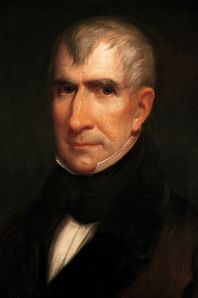








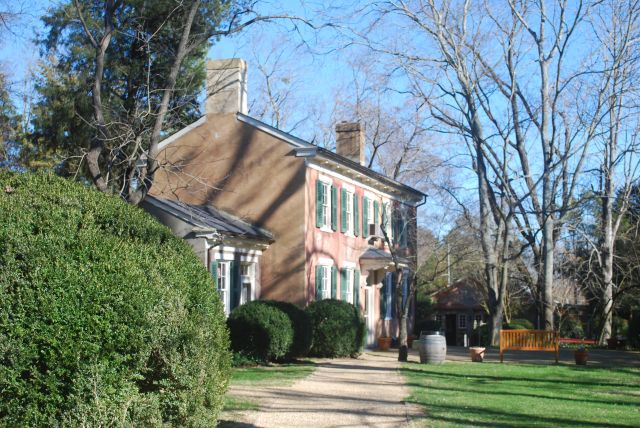




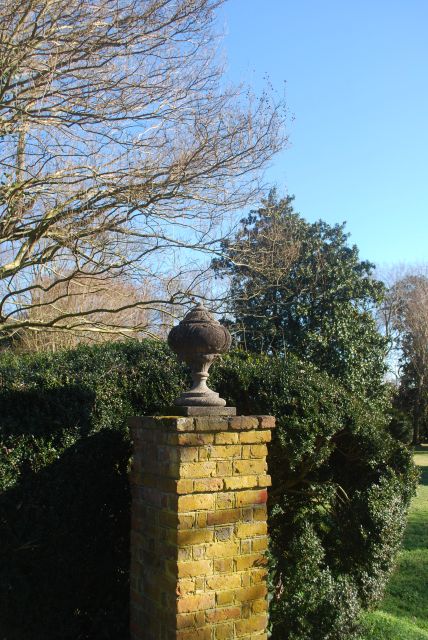
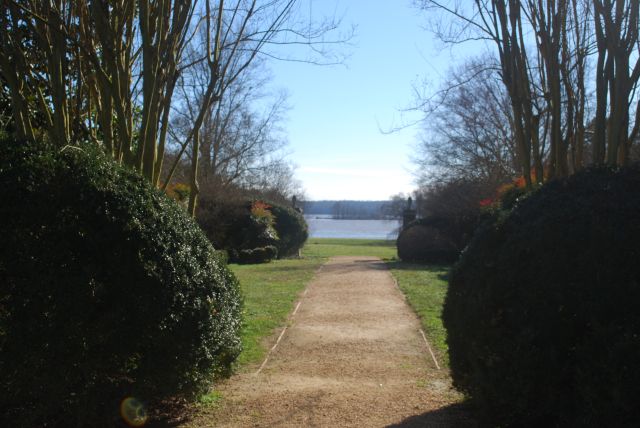
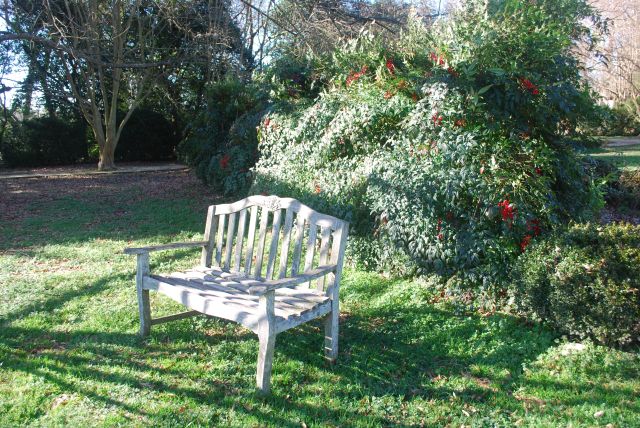
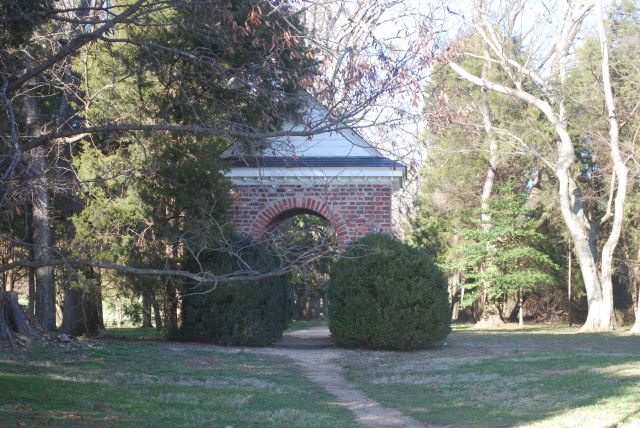





Beautiful. McClellan was the captain of the regime my great uncle William McMillin died in…in the First Battle of Bull Run.
Wow! That is so cool! Thank you!
I take my hat off to you, Ma’m. You research like a demon, write well, travel, and are opening a BnB. Do you sleep?
Thank you! Yes, for a short time! 😉
What a fantastic home! Rich in history.
It is a wonderful home. It’s just a stones throw from Westover from last post.
I remember those plantations well. Lived in Southampton County for four years.
They are all wonderful plantations. I would love to see Sherwood Forest before I move up to Belle Grove.
Good luck with that.
Of course, you have me thinking again. Is there a connection between Berkeley Plantation and Cal Berkeley. Not directly, but Cal Berkeley was named after George Berkeley who was an 18th century philosopher who was born in Ireland. He was a member of a cadet branch of the Berkeley family who owned the Berkeley Company in England.
I have always liked the two Harrison presidents, so it is neat to see the plantation where they lived.
I don’t think I have every hear of Cal Berkeley so it was cool to learn of him and the connections! I am with you too! I love to see where people come from!
After reading your reply I had to come back and look at what I wrote. I guess I didn’t make it clear that Cal Berkeley is referring to the University of California at Berkeley. We ofter simply refer to it as Cal or Cal Berkeley. In sports it is the Cal Bears. In any case the University, and therefore the city, is named for George Berkeley :-), who never even came to America.
Now I get it! Thanks!
What an amazing rich history you are documenting
Thank you! And it is so much fun doing it! 😉
I absolutely love visiting historical sites with you!
Thank you! I absolutely love “taking” you all with me! 😉
what a beautiful home. I always love all of your photos. I feel like I know your area so well through your eyes
Thank you! I love to take pictures. It is so much fun finding those small things people don’t always see.
that is the way i feel also
Nicely, nicely written. Lots of history.
Thank you! It was a lot of fun going back again. I have been there before but it is always fun returning to see things I missed before!
Wow! Fascinating accounts. Thank you so much for showing us all of this!
You are so welcome! It’s our pleasure! Thank you!
So well written it is entertaining! Great content choice “American 1st’s” really established the foundation for how significent this property is to American tradition. The photographs are absolutely stunning! I really feel as though I am much further acquainted with the grounds now than ever before. It is absolutely amazing that similar foliage is right here on my land. You are doing a tremendous job!!
Thank you! We love history and it is so much fun sharing our adventures!
Reblogged this on Practically Historical.
That’s such a beautiful home and setting!
Thank you! It was so much fun going and seeing it again!
How nice to see this beautiful home and grounds again. I used to visit often when I lived in the Richmond area. Many of us who worked in Media In Richmond became friends and admirers of Mac Jamieson for his tireless work in historic preservation. He deserves much of the credit for keeping historic route 5 in Charles City County free of commercial development. Mac died in 1997 I think but his legacy lives on at Berkley. Thanks for posting this. It brought back many wonderful memories.
You are so welcome! We love this plantation along the James River Plantation so it was great to see it again too! Thank you!
Looks like a wonderful place to visit. My favorite feature is of course the dent from the cannonball, and I wouldn’t mind relaxing by the river for a while.
Thank you! It is a really peacefully location. I would highly recommend it!
[…] Berkeley Plantation. […]
Thank you so much for sharing us with your readers! It really means a lot to us!
The hubby and I visited Berkeley several years ago … that visit really sparked my interest in historic homes 😉
It is a wonderful home and plantation. I love going back to find things I missed from the time before.
[…] Berkeley Plantation (virginiaplantation.wordpress.com) […]
Thank you so much for sharing our blog! It really means a lot to us!